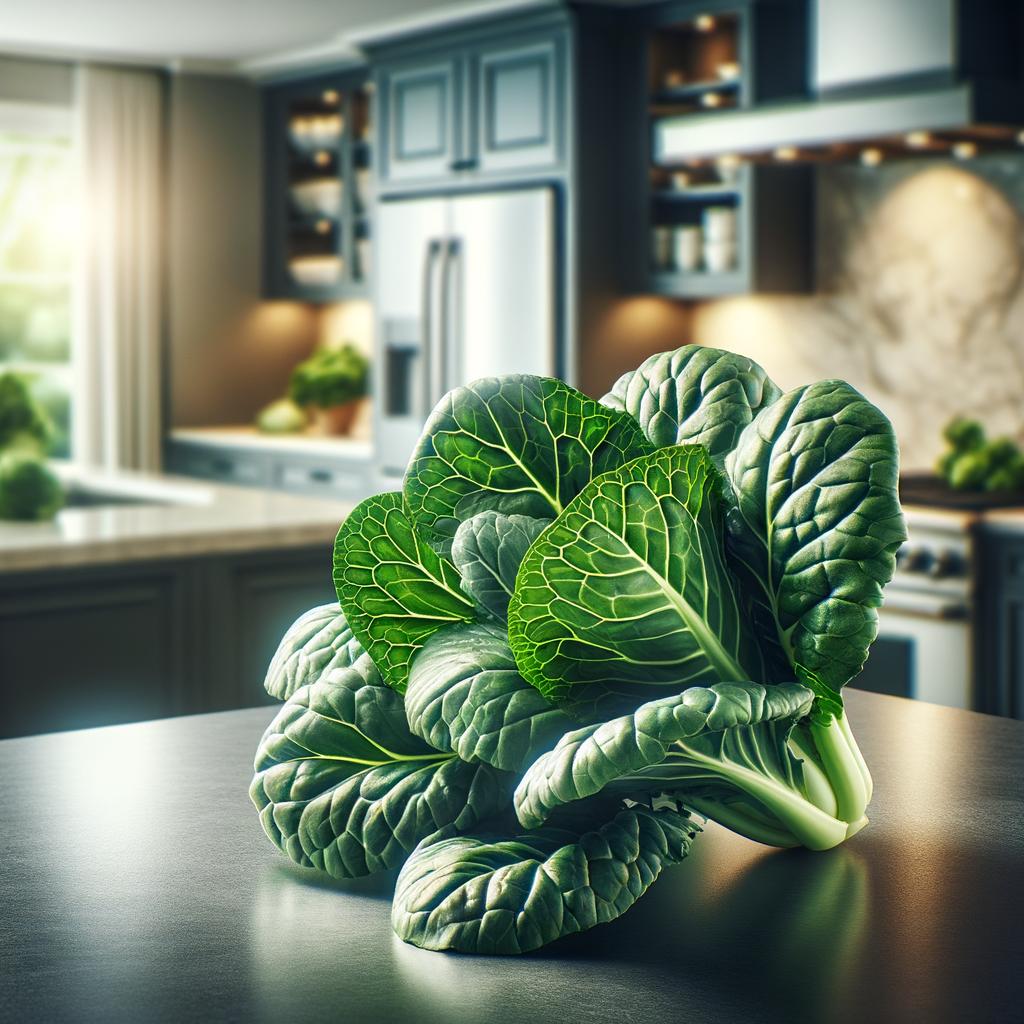Collard Greens

Description
Collard greens, a staple in many kitchens, are a type of leafy green vegetable that are part of the Brassica oleracea family, which also includes broccoli, kale, and cabbage. They have large, dark-colored, edible leaves that are slightly bitter in taste. Their texture is robust, a bit tougher than spinach, but softer than kale. The flavor profile of collard greens is a unique blend of bitter and earthy, with a slightly smoky undertone. One unique characteristic of collard greens is their ability to withstand both hot and cold temperatures, making them a versatile ingredient in a variety of dishes.
Primary Uses
Collard greens are commonly used in a variety of dishes around the world. In the Southern United States, they are traditionally slow-cooked with ham hocks or smoked turkey, creating a hearty, comforting dish. In East Africa, collard greens, known as sukuma wiki, are a staple, often sautéed with onions, tomatoes, and spices. They are also used in Mediterranean cuisine, often added to soups and stews. Beyond their culinary uses, collard greens have cultural significance in the American South, where they are a symbol of prosperity and are traditionally eaten on New Year's Day for good luck.
History
The history of collard greens is as rich as their flavor. They have been cultivated for over 2,000 years and were a favorite of the ancient Greeks and Romans. Their popularity spread throughout Europe and Africa before making their way to the Americas with the early settlers. In the American South, collard greens became a staple for enslaved Africans, as they were one of the few vegetables available to them. Over time, they became a symbol of resilience and resourcefulness. There's a charming folklore that eating collard greens on New Year's Day will bring wealth in the coming year, a tradition still upheld in many Southern households.
Nutritional Information
Collard greens are a nutritional powerhouse. They are rich in vitamins K, A, and C, and are a good source of fiber, calcium, and iron. They also contain several beneficial compounds like beta-carotene and lutein, which promote eye health. The consumption of collard greens has been associated with a reduced risk of heart disease and certain types of cancer. Compared to other leafy greens, collard greens have a higher protein content and are lower in calories, making them a nutritious addition to any diet.

